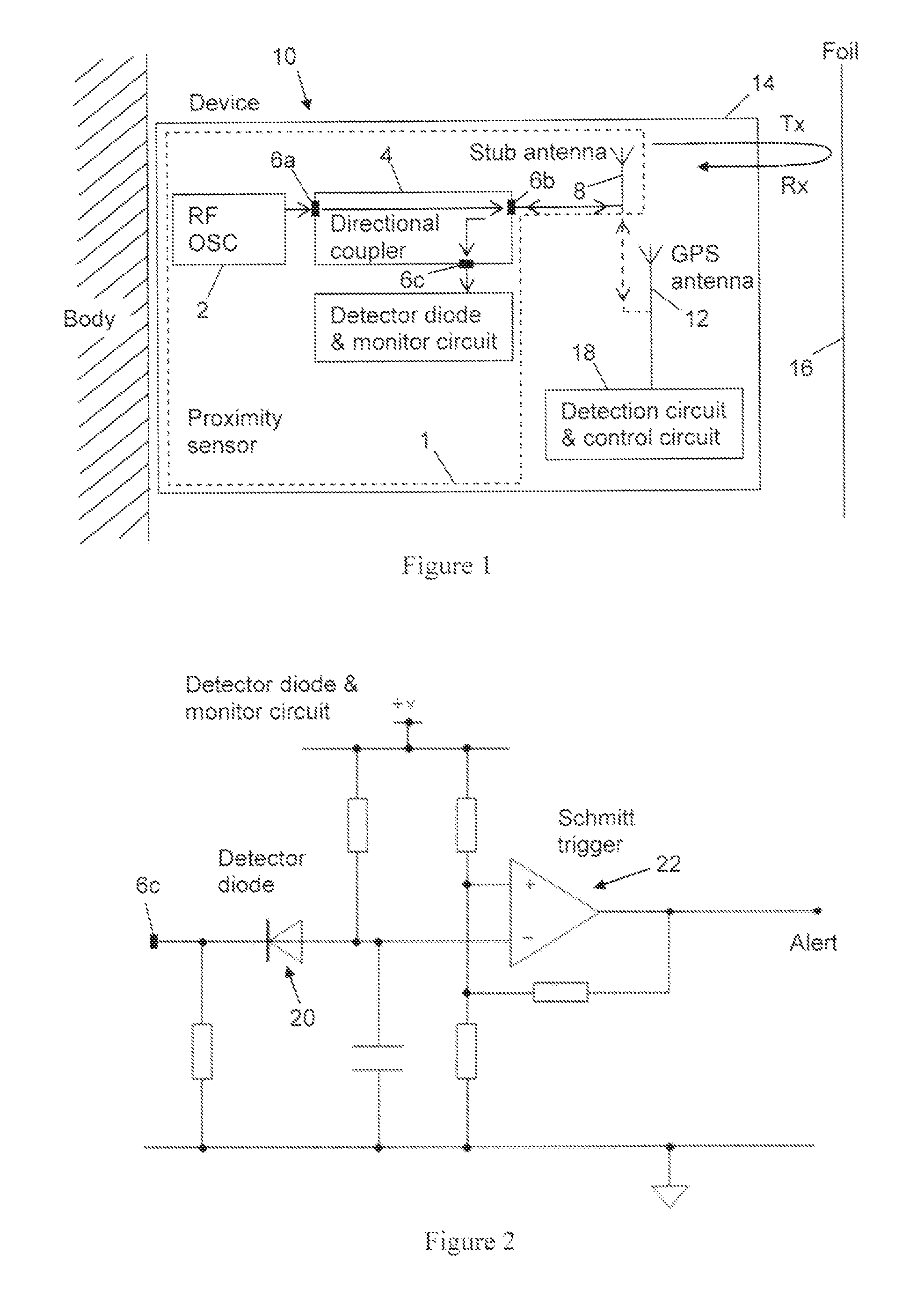Proximity sensors
a technology of proximity sensors and sensors, applied in the field of proximity sensors, can solve problems such as false positive alerts, and achieve the effect of minimising reflections from the body and minimising the proportion of the radiated power of the transmit signal
- Summary
- Abstract
- Description
- Claims
- Application Information
AI Technical Summary
Benefits of technology
Problems solved by technology
Method used
Image
Examples
Embodiment Construction
[0019]A foil sensor 1 according to the present invention will be described with reference to FIGS. 1 and 2. To aid integration, the foil sensor 1 is preferably small, low cost and uses surface mount technology. A preferred operating frequency for the foil sensor is 2.45 GHz because this is a popular ISM band and suitable RF components are readily available from commercial suppliers.
[0020]The foil sensor 1 includes a low power RF oscillator 2. An RF directional coupler 4 has a first port 6a and a second port 6b. A third port 6c operates either as an isolated port or a coupled port depending on the direction of RF power flow through the directional coupler 4. This will be explained in more detail below.
[0021]The first port 6a is connected to the oscillator 2 by a 50 Ω transmission line.
[0022]The second port 6b is connected to a stub antenna 8 such as a printed quarter wave stub antenna.
[0023]The foil sensor 1 is incorporated into a device 10 such as a monitoring tag (e.g. an offender ...
PUM
 Login to View More
Login to View More Abstract
Description
Claims
Application Information
 Login to View More
Login to View More - R&D
- Intellectual Property
- Life Sciences
- Materials
- Tech Scout
- Unparalleled Data Quality
- Higher Quality Content
- 60% Fewer Hallucinations
Browse by: Latest US Patents, China's latest patents, Technical Efficacy Thesaurus, Application Domain, Technology Topic, Popular Technical Reports.
© 2025 PatSnap. All rights reserved.Legal|Privacy policy|Modern Slavery Act Transparency Statement|Sitemap|About US| Contact US: help@patsnap.com


